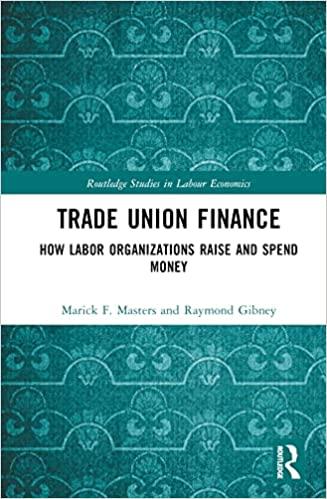Question
1. To determine the amount of external funds needed (EFN), you may subtract the expected increase in liabilities, which represents a source of funds, from
1. To determine the amount of external funds needed (EFN), you may subtract the expected increase in liabilities, which represents a source of funds, from the sum of the expected increases in retained earnings and assets, both of which are uses of funds.
TRUE OR FALSE
2. The Geurts corporation decides to expand its production and in order to do so it will need to issue new equity. The days before the actual announcement the stock price decreases on an unusual high number of large sell-orders. This would be an example of:
a. Weak market efficiency.
b. Semi-strong market efficiency.
c. Strong market efficiency.
d. Very strong market efficiency.
e. None of the above, this is normal market behavior.
3. You want $15,000 3 years from now, while you have saved $12,500 in a savings account that pays 8 percent interest, compounded semi-annually. What are the semi-annual cash-flows associated with this situation?
a. Zero.
b. You need to add $123.10 each half year to the account.
c. You can withdraw $123.10 each half year from the account.
d. You need to add $659.21 each half year to the account.
e. You can withdraw $659.21 each half year from the account.
4. A firm is buying a new machine that has the following cash-flows during its expected life of 4 years: Purchase Price = $250,000, Terminal Value = $100,000, and yearly cash flows of $60,000. The firm has a contract with a buyer who purchases and pays the product that the machine makes at the beginning of each year. What is the expected yield of the machine?
a. 28%
b. 16%
c. 14%
d. 11.3%
e. -1.61%
5. A firm wants to buy a machine that is expected to yield 12%. It plans to finance it with 50% Debt and the rest Equity, so there is no preferred stock. The cost of Debt is 7% and the tax rate is 25%. What is the expected return for the shareholders?
a. 2.63%
b. 12%
c. 17%
d. 18.75%
e. 19.5%
Step by Step Solution
There are 3 Steps involved in it
Step: 1

Get Instant Access to Expert-Tailored Solutions
See step-by-step solutions with expert insights and AI powered tools for academic success
Step: 2

Step: 3

Ace Your Homework with AI
Get the answers you need in no time with our AI-driven, step-by-step assistance
Get Started


